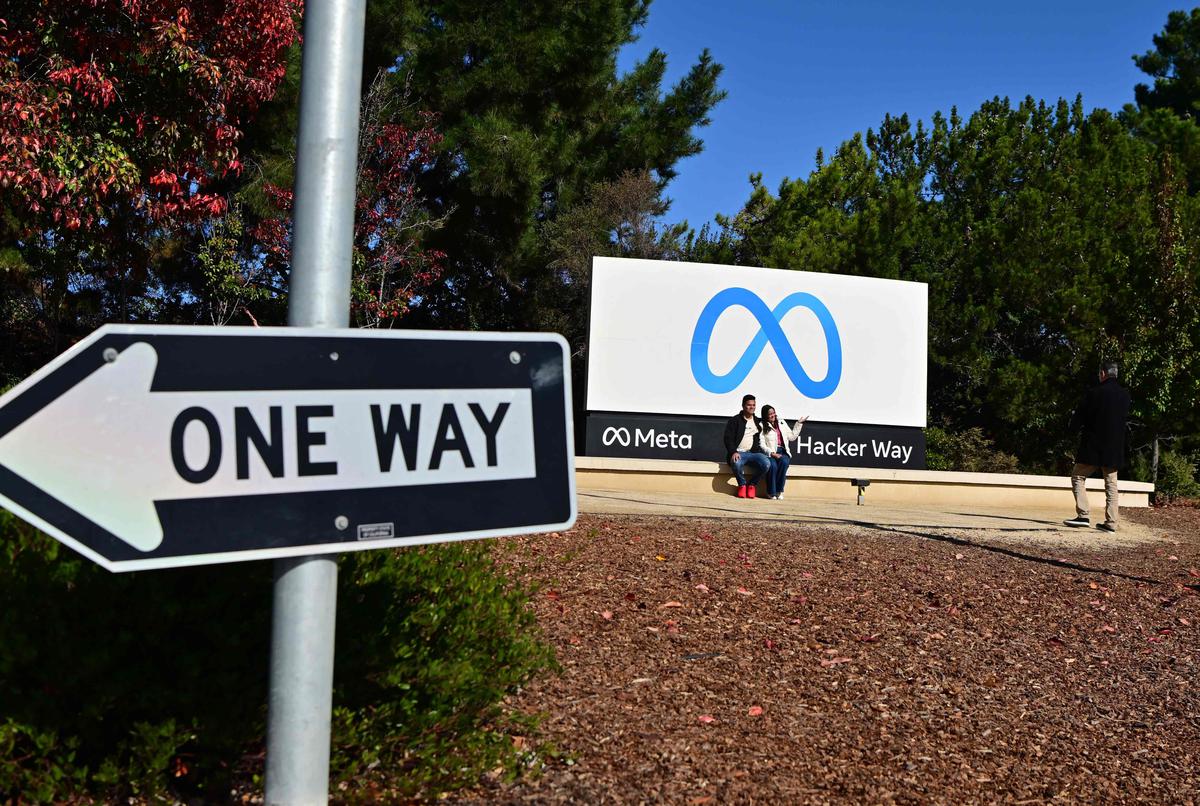Data | Layoffs by IT firms in the U.S. will greatly impact H-1B workers from India

Layoffs: People take a photo at Meta corporate headquarters in Menlo Park, California on November 9, 2022. – Facebook owner Meta will lay off more than 11,000 of its staff in the most difficult changes made in Meta’s history, according to CEO Mark Zuckerberg
| Photo Credit: JOSH EDELSON
In 2020, the number of people employed by Meta was about 58,000. Despite two years of the COVID-19 pandemic, the employee count increased to 87,000 in 2022. Tech giants Amazon, Microsoft and Apple also recorded a similar increase. The idea was to cash in on the increased online presence of Internet users due to COVID-19-related movement restrictions by widening operations.
However, as the intensity of the pandemic declined, the time spent online also reduced. Dependence on online platforms especially reduced for activities such as shopping and studying. Also, over 95% of people were already using social media and messaging platforms, according to GWI, an audience research company, so the potential for growth for companies was minimal. As the expectation that online usage will continue to grow did not materialise, the net incomes of tech companies fell resulting in layoffs. Meta co-founder Mark Zuckerberg acknowledged this failure when he said that he had predicted, like many others, that the surge of e-commerce at the start of COVID-19 would continue after the pandemic ended. “Unfortunately, this did not play out the way I expected,” he said.
Indian workers who have been laid-off have a big worry. If they are unable to find a new employer within 60 days, they are faced with the prospect of leaving the U.S. and re-entering later. But the average waiting time for an interview appointment at the U.S. Embassy in cities in India is over a year (as on November 29). This is a problem that only Indian workers face, as the waiting time in other countries is less by at least 100 days; in a majority of them, it is less than 15 days. To make matters worse, the prospects of these Indian workers back home are also weak. Most Indian IT companies have frozen or slowed down hiring, as recessionary fears in the U.S. and high inflation in Europe have kept demand low.
Chart 1 shows the average time spent each day on the Internet by users aged between 16 and 64 worldwide, according to GWI. The time spent spiked during the pandemic and declined as movement restrictions eased.
Charts appear incomplete? Click to remove AMP mode
Table 2 shows the share of Internet users who visited or used a digital service in the preceding 30-day period. While the share who visited banking, messaging and social media sites remained mostly the same, the share of those who used educational and commercial sites declined.
Table 3 shows the net income in $ million for select U.S. tech giants. After recording significant increases during the pandemic peaks, which gave them hope to deepen investments, the companies saw poor returns in the last three quarters and were forced to lay-off employees.
Click to subscribe to our Data newsletter
Table 4 shows the employee headcount. The staff strength surged during the pandemic period. But according to recent news reports, Meta has fired more than 11,000 employees, Amazon is planning to lay off over 10,000 workers, Microsoft is expected to send home about 1,000 workers, and Apple is not hiring for now. A fair share of the affected employees are Indians, forming a lion’s share of the H-1B hirings.
Chart 5 shows the estimated wait time to receive an interview appointment at a U.S. Embassy or Consulate for temporary workers with visa types H, L, O, P and Q, as on November 29. Five Indian cities stand out with a wait time close to a year.
Table 6 shows the year-on-year change in employee count for select IT firms in India. The numbers have fallen drastically in the latest quarter.
With inputs from Vignesh Radhakrishnan
[email protected], [email protected]
Source: GWI, Travel.State.Gov, annual and quarterly reports of select companies
Also watch:Business Matters | Why are company layoffs becoming common?
Listen to more Data Point podcasts
For all the latest business News Click Here

